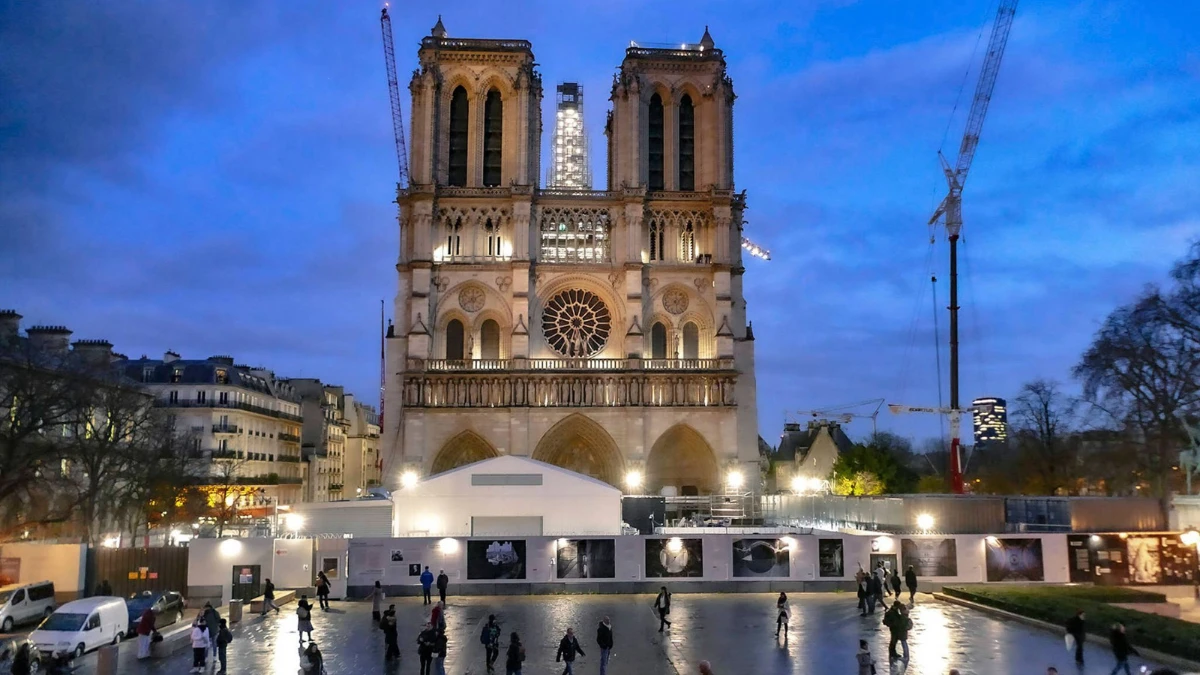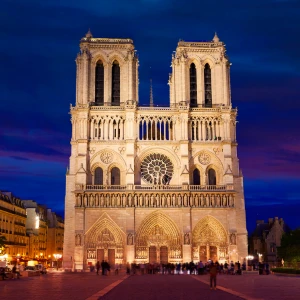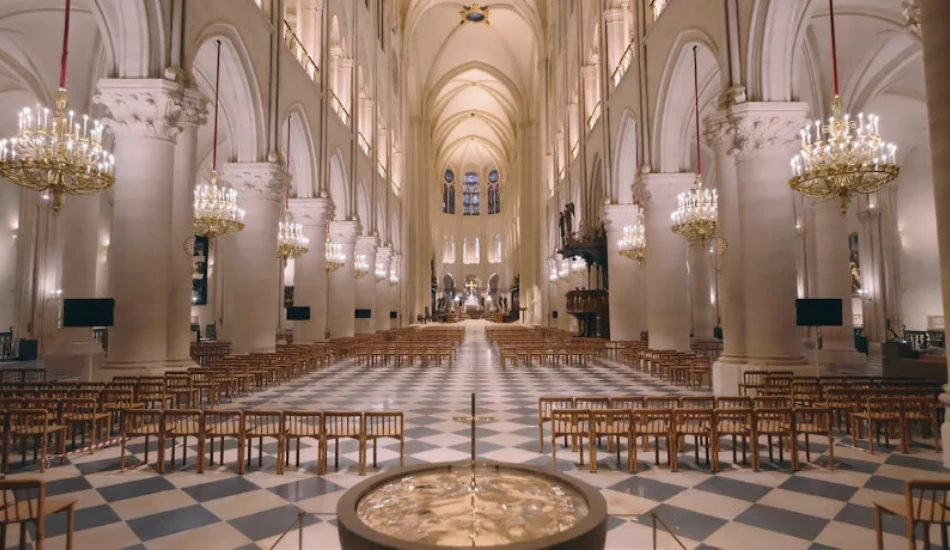Did you know that in front of the Notre Dame cathedral lies Point Zéro des Routes de France, the brass plate from which all distances from Paris are measured? This underscores Notre Dame’s role as the heart of the nation.
Or did you know that a novel Victor Hugo’s The Hunchback of Notre Dame saved Notre Dame from demolition? Hugo’s evocative portrayal of Notre Dame’s grandeur sparked a movement to restore the landmark, saving it from ruin and securing its place as a cherished cultural icon.
Here’s a list of surprising and interesting facts about Notre Dame Cathedral that you may not know!
Snapshot
Construction Start: 1163
Completion: 1345 (around 182 years)
Height: 69 meters (226 feet)
Length: 128 meters (420 feet)
Width: 48 meters (157 feet)
Towers’ Height: 69 meters (226 feet)
Spire Height (before fire): 93 meters (305 feet)
Weight of the Bells: The largest bell, Emmanuel, weighs over 13 tons.
Visitors (annually before the fire): 12 million
Gargoyles: Approximately 56
Seats: 9,000
Stained Glass Windows: 110+
Organ Pipes: 8,000 (the largest organ in France)
Paris begins at Notre Dame’s front door

Related Reads
Point Zéro des Routes de France, a brass plate in front of Notre Dame, marks the starting point for measuring distances from Paris.
This simple marker reflects the cathedral’s significance not only as a religious site but as the symbolic center of France.
Locals and tourists alike stand on this plate to feel connected to the heart of the country, reinforcing Notre Dame’s status as the epicenter of national identity.
Gargoyles are more than just scary faces
Notre Dame’s gargoyles act as rain spouts, protecting the walls from erosion by directing water away from the stone facade.
Beyond their functional purpose, these eerie figures have a mythological role. According to legend, gargoyles ward off evil spirits and protect the cathedral from dark forces.
Originally painted in bright colors, the gargoyles once stood out vividly, but the hues faded over time, leaving behind the weathered stone guardians we see today.
Recommended
Notre Dame stands on top of ancient secrets
Before Notre Dame, the site held two Christian churches and a Gallo-Roman temple dedicated to Jupiter.
When construction began in 1163, remnants of these ancient places were uncovered, merging layers of history into one foundation. The foundations of Notre Dame are a literal and symbolic representation of Paris’s spiritual evolution.
Each stone carries with it the essence of ancient civilizations, making Notre Dame a beacon of continuity through centuries.
Learn more such ancient secrets about Notre Dame.
Math and beauty go hand in hand

The Golden Ratio subtly shapes Notre Dame’s structure, creating perfect proportions that please the eye.
Medieval architects used this mathematical principle to guide the dimensions of the facade, towers, and windows.
This careful calculation ensured that the cathedral’s beauty resonated harmoniously with nature’s own design patterns, reinforcing the belief that architecture could reflect divine perfection.
It took 182 years to build
Notre Dame’s construction spanned from 1163 to 1345, blending architectural styles as techniques evolved.
Builders passed down knowledge from generation to generation, resulting in a structure reflecting Romanesque and Gothic influences.
This long timeline demonstrates the patience, skill, and dedication required to create a masterpiece that continues to inspire awe centuries later.
Recommended
The Crown of Thorns calls Notre Dame home
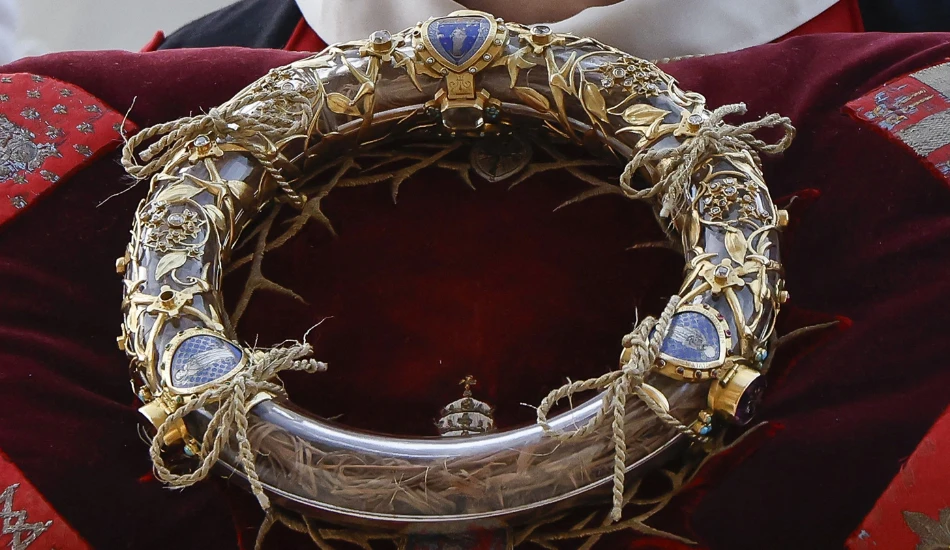
Notre Dame houses the Crown of Thorns, which is believed to have been worn by Jesus.
This sacred relic was brought to Paris in the 13th century by King Louis IX. The Crown was displayed in a jeweled reliquary, adding to the cathedral’s reputation as a place of pilgrimage.
During the 2019 fire, rescuers risked their lives to save this priceless artifact, securing its place as one of Notre Dame’s most cherished possessions.
A choir with a deeper meaning
Viewed from above, the choir’s layout resembles Christ’s bowed head, symbolizing His suffering.
This hidden design element transforms the choir into more than just a performance space; it becomes a physical embodiment of sacrifice and redemption.
The intricate carvings and vaulted ceilings add to the spiritual ambiance, immersing visitors in a space of reverence and contemplation.
Take a guided tour of Notre Dame Cathedral. The expert guides will provide you with many interesting facts and insights and make your visit even more memorable.
Even the bells have names
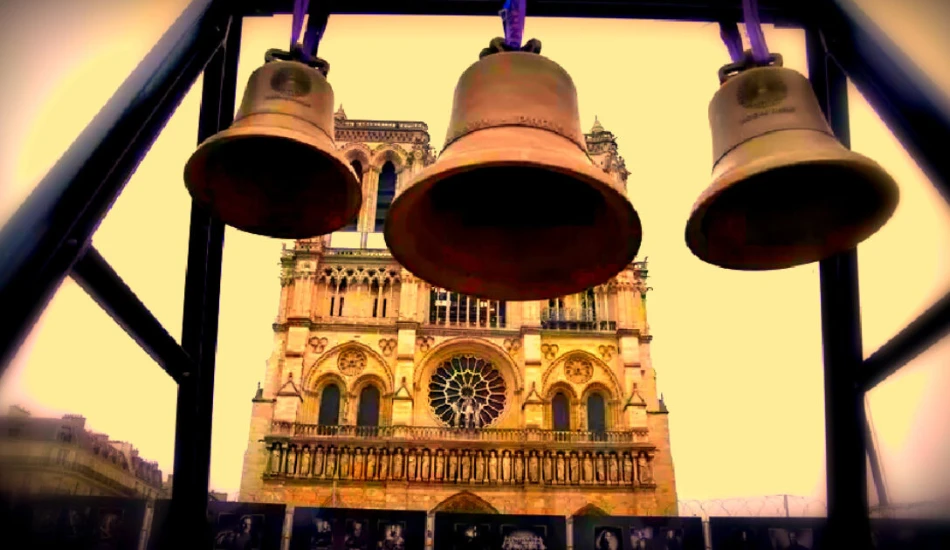
Notre Dame’s bells have distinct names and personalities. The largest, Emmanuel, weighs 13 tons and has been ringing since the 17th century.
It rings on major religious holidays and state events, its deep, resonant sound symbolizing unity and celebration.
The other bells, Marie, Gabriel, and Anne Geneviève, join Emmanuel in announcing the cathedral’s presence across Paris, creating a soundscape that echoes through the city’s streets.
💡Related read: Visiting the bell tower.
A Novel Saved the Cathedral
By the 19th century, Notre Dame faced neglect and possible demolition. Victor Hugo’s “The Hunchback of Notre Dame” became a passionate plea for its preservation.
Hugo’s vivid descriptions of the cathedral’s gothic beauty captured the public’s imagination and inspired a restoration campaign.
The novel not only revived interest in Notre Dame but cemented its place as a cultural treasure.
Hidden Secrets beneath the Cathedral

Beneath Notre Dame lies an archaeological crypt that reveals Roman and medieval ruins.
In the aftermath of the 2019 fire, archaeologists discovered sarcophagi and burial sites beneath the spire, shedding light on hidden chapters of the cathedral’s history.
These discoveries show Notre Dame as not just a structure above ground but as part of a larger historical narrative buried beneath the streets of Paris.
⭐ Visit the archaeological crypt
Napoleon stole the spotlight
In 1804, Napoleon crowned himself Emperor at Notre Dame, taking the crown from Pope Pius VII to assert his authority.
This bold act redefined the relationship between the Church and state, symbolizing Napoleon’s desire to place political power above religious tradition.
The ceremony, immortalized in paintings, reinforced Notre Dame’s role as the stage for defining moments in French history.
A Spire with a hidden rooster
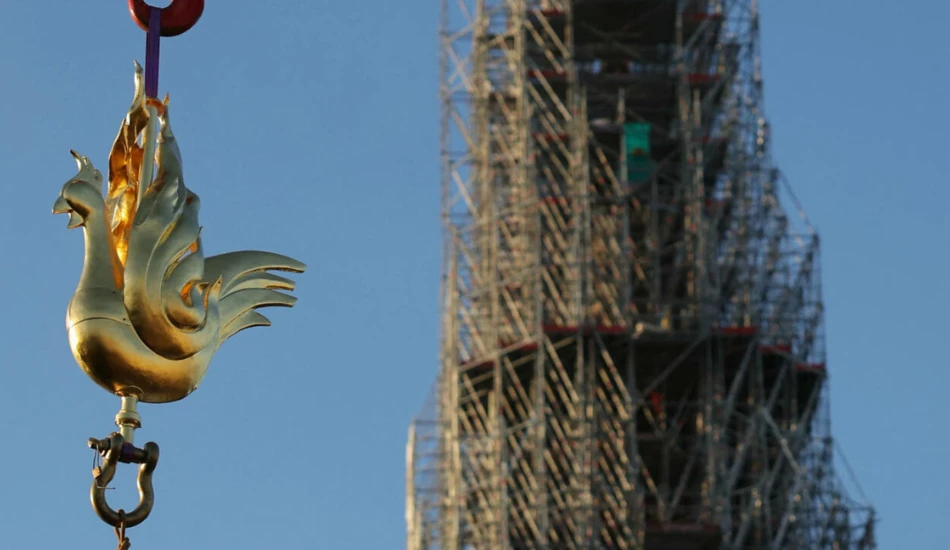
Before the 2019 fire, a copper rooster containing relics of St. Denis and St. Geneviève sat atop Notre Dame’s spire. The rooster symbolized protection over the city.
Miraculously, the rooster was found amidst the rubble after the fire, symbolizing hope and resilience.
When restoration is complete, plans are underway to return the rooster to its rightful place.
The ghost stories of Notre Dame
Notre Dame’s age and grandeur have given rise to ghost stories. Some believe the spirits of builders, clergy, and musicians haunt its corridors.
Visitors occasionally report hearing faint organ music or footsteps in the empty nave, adding an air of mystery to this sacred site. Whether true or not, these legends add to the allure and mystique of Notre Dame.
The organ that breathes music
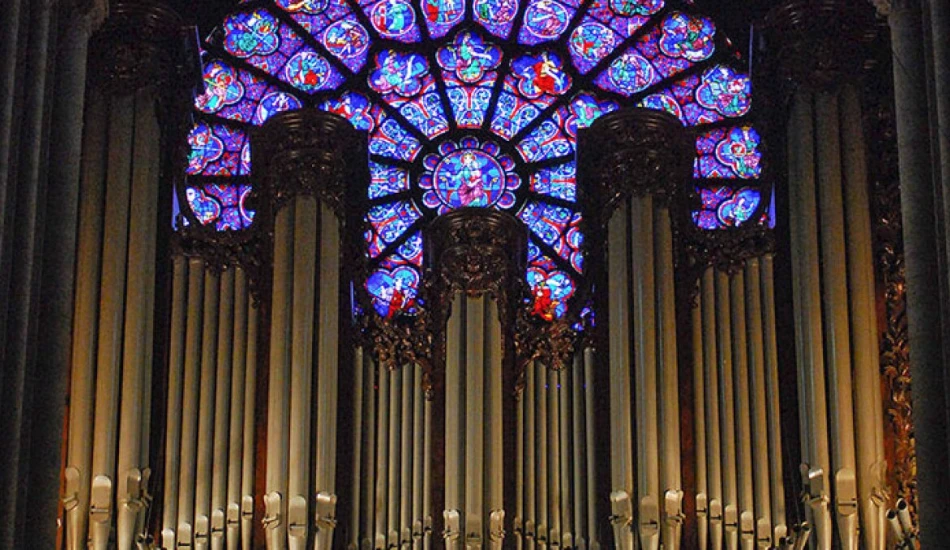
Notre Dame’s organ, with over 8,000 pipes, is a marvel of engineering and artistry. Capable of producing both delicate notes and powerful roars, it fills the cathedral with music that transcends time.
Some pipes date back to the 18th century, making the organ not only an instrument but a historical artifact in its own right.
Beheaded statues of the revolution
During the French Revolution, the 28 statues of biblical kings on Notre Dame’s facade were mistaken for French monarchs and beheaded.
Their decapitated heads were rediscovered centuries later in 1977 and now reside in the Cluny Museum.
This incident highlights the turbulent relationship between Notre Dame and the shifting political tides of France.

